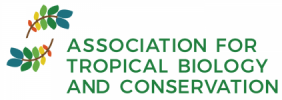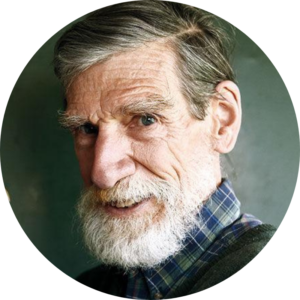Phyllis D. Colley
Phyllis (Lissy) Coley is a Professor at the University of Utah, a Research Associate of the Smithsonian Tropical Research Institute, a Fellow of the Ecological Society, and a Member of the American Academy of Arts and Sciences. Her career has focused on plant anti-herbivore defenses in rainforests throughout the tropics, a key aspect shaping tropical communities. Her early research quantified patterns of plant defenses and studied how selection may have favored different defense investments in species of different life histories and habitats. She has also used physiological approaches to examine the costs and benefits of defense as well as the adaptations of plants to life in the understory. A major current focus in her lab is to characterize chemical defenses (metabolomics) and link these to other plant traits and to herbivore host choice. This work focuses on the speciose and widespread tropical tree genus Inga (Fabaceae), a model to understand how herbivores may be driving rapid evolution of defenses and how this might contribute to community assembly and speciation in the genus. She also established a multimillion dollar bioprospecting program in Panama which has made a major impact on both science and conservation.
1- What drew you to the field of tropical ecology?
I have always loved natural history and felt most at home in the natural world, but I have to admit, my decision to study tropical ecology, was partly serendipitous. For grad school I basically flipped a coin between rainforests with Robin Foster at the University of Chicago, and municipal sewage treatment. Sewage treatment might have turned out to be fascinating, but tropical rainforests certainly have captured my heart and mind. I decided to study plant/insect interactions since I saw herbivory as a fundamental shaper of rainforest ecosystems. I started with 2 years of fieldwork on Barro Colorado Island in Panama, which offered a wonderfully diverse forest as well as inspirational conversations over dinner. I have since worked in Asia, Equatorial Africa, and am now focused in the Amazon.
2- What is the most exciting development in the field that has occurred during your career?
Paul Feeny’s apparency theory was completely inspirational to me and formed the motivation for my thesis. Although my results did not lend much support for his hypothesis, he became a role model for being positive, gracious and supportive of young scientists. Recently, my research has benefited enormously from the revolution of metabolomics, which allows one to characterize the entire suite of secondary metabolites expressed by plants as anti-herbivore defenses. The advances brought on by this and related techniques are nothing short of stunning. For my thesis research in the 1970’s, I did hundreds of Folin-Dennis tests in the bathroom of my cabin on BCI. A pretty crude assay to say the least but it was the best we had to compare phenolic defenses among tree species. Now, using metabolomic techniques, we’re able to ask and answer questions I couldn’t even have dreamed of as a grad student. For instance, we’ve shown that the entire suite of defense compounds, approximately 200 per leaf, strongly shapes herbivore host choice, that defense metabolism evolves much quicker than other plant traits and that it likely occurs in regulatory gene pathways rather than structural gene pathways.
3- What is your favorite memory of fieldwork?
That’s a difficult question… fieldwork has been an endless source of beautiful memories. That is one of its joys – almost every day there is some new adaptation or elusive moment that takes your breath away. If I had to pick, it is a month Tom Kursar and I spent camping by ourselves in Korup, Cameroon. We had rice and sugar for breakfast, rice and salt for dinner, peanut butter for lunch and our tent leaked constantly. But the magic of being emersed in the sounds and smells of the forest, bathing in the stream, falling asleep to the calls of tree hyraxes, and of course spending all day gathering data on expanding leaves, was like time holding still.
4- What accomplishment by you and/or your research team are you most proud of?
Well, the research team should get most of the credit. And the most important member was my late husband, Tom Kursar, who was a key driver of our research agenda. It was a joy to do field work together for 40 years. And we are lucky to have had an amazing group of extremely accomplished postdocs, graduate students, and an army of dedicated field assistants from the US and tropical nations. They are an essential part of our scientific family for whom we are so grateful. Scientifically I think we have made contributions to understanding why tropical rainforests are so diverse, in other words, how can so many species coexist without one winning? For 650 species to coexist in a single hectare of tropical forest, they must have different niches, and it is hard to imagine that there are 650 ways to divide up 1 ha of rainforest based on adaptations for obtaining light, water and nutrients. But there could be an infinite number of niches with respect to defenses against herbivores. If neighbors had similar defenses, the same herbivore species could attack them, they would suffer reduced fitness, prohibiting one species from dominating. Thus, having different defenses than one’s neighbors would mean the neighbor’s herbivores could not attack, and both species could co-exist. I would like to extend this to speciation, where selection would favor being different than close relatives.
5- What contributions has your basic science made to tropical conservation?
As my mother always said, what good was it to study caterpillars eating leaves? And of course, mothers are always right. The rainforests we loved were being destroyed all around us. So, we initiated a drug discovery program in Panama, postulating that the arsenal of secondary metabolites in expanding leaves would be a rich source of pharmaceuticals. However, for bioprospecting to function as a conservation tool, we knew we could not rely on the miniscule chance of receiving royalties. Instead, we used our NIH funds to conduct all the research with Panamanian scientists and assistants. This provided immediate and guaranteed benefits to Panama, led to numerous patents, was recognized by the UN as a model for benefit sharing, and actually promoted conservation of both marine and terrestrial habitats.
6- What role did the ATBC play in your career?
ATBC has always been in my career. The annual meetings are my number 1 priority, above all the other societies in which I participate. The science talks are always compelling and inspiring, and the opportunity to embrace old friends, and to meet established giants and emerging stars in such a supportive atmosphere is extraordinary.
7- What would be your advice to a young scientist starting a career in tropical ecology and conservation?
Go for it! You will constantly be stimulated by the endless community of interactions that shape a tropical forest, and the endless questions and wonders that emerge. Despite the appeal of the many emerging forms of bioinformatics, don’t forget to spend time and take inspiration from the real world. Additionally, tropical forests are biodiverse and threatened, so understanding and conserving them is fundamental to the future of our planet.
F. Gary Stiles
Gary Stiles is a Professor at the Universidad Nacional de Colombia, an elected Honorary Fellow of the American Ornithological Society, and a Member of the Academia Colombiana de Ciencias Exactas, Fisicas y Naturales. Gary is a renowned ornithologist, having produced hundreds of classic research papers on the various behavioral, life-history, and species-interaction strategies of birds, especially hummingbirds on which he is the world’s authority. Together with Alexander Skutch, Gary authored the Guide to the Birds of Costa Rica, which has been an inspiration and key resource for students, researchers, and visitors working in the tropics. Apart from his current position at the Universidad Nacional de Colombia, Gary also held faculty positions at the Universidad de Costa Rica and the Pontifica Universidad Javeriana (Colombia). Throughout his career he has mentored more than 80 undergraduate and graduate students that are now leading ornithologists and tropical biologists throughout the world. He has also participated as an instructor on more than 100 field courses throughout Latin America, during which time he has taught and inspired a whole generation of tropical ecologists.
1- What drew you to the field of tropical ecology?
My first inkling of the richness of the Neotropics and its avifauna was through my fascination with the diorama of BCI forest and its avifauna in the AMNH. My chance to go there came with two summer stints in Trinidad as a research assistant in Lincoln Browers’s studies of mimicry in butterflies, where my main job was to catch the birds used in the experiments (as a birder since childhood, I was delighted to see and identify so many new and interesting birds; in a word, I was hooked for life).
2- What is the most exciting development in the field that has occurred during your career?
Again, given that my interests in tropical ornithology are so broad, it’s hard to single out any single development. As one of the first to study tropical hummingbird ecology, I am most impressed with how this field has progressed – in the number of researchers, the breadth and quality of new research.
3- What is your favorite memory of fieldwork?
After 50 years in the tropics, I have so many memories. One notably exciting moment was my discovery of a hummingbird new to science in one of Colombia’s most spectacular and little-known areas, the Sierra de Chiribiquete – heady stuff for a longtime hummingbird addict!
4- What accomplishment by you and/or your research team are you most proud of?
I am proud of how my field guide with Alexander Skutch helped to stimulate interest in observation and conservation of birds in Costa Rica – and how, with my wife and colleague Loreta Rosselli, we have helped to promote and organize bird study and conservation in Colombia, in the foundation of one local and one national association and a journal, Ornitología Colombiana, still going strong.
5- What contributions has your basic science made to tropical conservation?
My field trips in Costa Rica and Colombia with many dedicated colleagues and students have provided many data on distributions and status of many birds, helping to awaken interest in and conservation of these avifaunas.
6- What role did the ATBC play in your career?
I received much stimulation and advice during my early years in Costa Rica, dedicated largely to ecology of Heliconia, given the strong botanical bent of the ATB in those years, and still find many interesting and stimulating articles in Biotropica on bird-plant mutualisms and their conservation implications.
7- What would be your advice to a young scientist starting a career in tropical ecology and conservation?
While I am impressed by the capacity of automated methods like many cameras focused on flowers to produce abundant data usable in various, often novel types of analyses, I also note limitations: for instance, the behavior of the bird before and after leaving the focus area, be it a flower or a lek perch may produce interesting observations beyond what the camera can record. I note that the present trend for taking the largest amount of data in the least possible time in relatively short field trips may be a result of the way grant proposals are evaluated, but… whenever possible, take the time to sit down for a few hours to observe what goes on beyond the camera’s eye!


